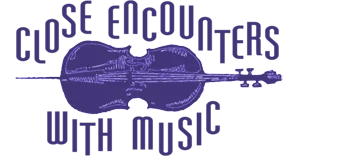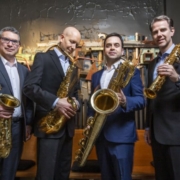April 24, 2022
What would it be like if Robert Langdon, acclaimed professor of symbology at Harvard University (and fictional hero of Dan Brown’s best-selling novels, including “The Da Vinci Code”) explored hidden symbols and secret codes buried in music instead of art and architecture? The answers will be made known in “Sub-Rosa: Secrets Revealed” a program of choral music with the Skylark Vocal Ensemble on Saturday, April 30 at the Mahaiwe Performing Arts Center in Great Barrington, Mass. The concert is presented by Close Encounters with Music.
The concept of the program arose about five years ago during conversations between Matthew Guard, Skylark’s founder and artistic director, and Gregory W. Brown, a well-recognized composer who is Dan Brown’s brother. It turns out there’s lots of music in the Brown family. Their mother was a church organist while their father was a math teacher. Early in his professional life Dan Brown pursued being a pop songwriter. He readily agreed to be part of the choral music project.
“Sub Rosa” will have a strong visual element with photographs, illustrations, and animations that accompany the music. Think Tom Hanks as Langdon with his PowerPoint. But rather than Hanks/Langdon, the smart fellow unlocking and explaining the esoterica will be author Dan Brown himself via video also with several other experts. Guard, the conductor, doesn’t promise the presentation will be quite as well-paced as a Robert Langdon page-turner, but he says so far “it’s been fun and interesting.”
Skylark has a well-earned reputation for creative programming and has been nominated for three Grammy Awards during its 10-year history. In putting together the components of “Sub-Rosa,” Guard may have outdone himself in terms of the historical breadth of repertoire. The music stretches from the medieval with Hildegard Von Bingen to contemporary times, with music by four living composers. Also on the bill are Guillaume Dufay, Benjamin Britten, Edward Elgar, and Per Norgard among others. Gregory W. Brown and Melissa Dunphy wrote new works specifically for the program, which is being performed by the 16-voice ensemble in three locations in eastern Massachusetts during the week prior to coming to the Berkshires.
“Long-forgotten historical connections have been buried in manuscripts of choral music over the centuries, and I think our audiences will be fascinated to experience them,” says Guard.
“Sub Rose: Secret Symbols” takes place at 6 p.m. Saturday, April 30, at the Mahaiwe Performing Arts Center, 14 Castle St., Great Barrington, Mass. Tickets are $28-$52. Call (413) 528-0100 or visit: Mahaiwe.org
Also on Saturday, April 30, the eastern New York chapter of the American Guild of Organists is celebrating its centennial with a free concert at 3 p.m. at St. Peter’s Episcopal Church in Albany. The featured artist is Joey Falla, who is director of music at University Presbyterian in Chapel Hill.
Falla was raised in Hawaii and took a circuitous route to becoming a professional organist that includes significant time spent in the Capital Region. Falla studies at RPI in Troy where he earned a bachelor’s degree in architecture and a master’s in lighting, while serving as organist at First United Presbyterian in Troy. He then turned fully toward music and took a master’s in performance from Yale. He has also been a resident scholar at Duke.
A highlight of Falla’s program will be a new work with an Albany twist. Al Fedak’s “An Albany Processional” is based on the hymn tune “Albany,” which was written in 1886 for the city’s bicentennial by John Albert Jeffery (1855-1929), organist at All Saints Episcopal Cathedral. Fedak is an internationally known composer of sacred music and currently serves as organist at First Reformed in Scotia. It’s not hard to imagine that future generations might one day pay tribute to his music in the same manner.
There’s a familiar footnote to this event listing. It was planned to take place in 2020 but the pandemic got in the way. The AGO chapter was founded in September 1920 and currently consists of over 100 organists, choir directors, and organ enthusiasts in the greater Capital District.
The organization provides professional networking, support and fellowship and produces a few concerts annually. Keep up with the group at: enyago.org.
Joseph Dalton is a freelance writer based in Troy.
A Times Union contributor since 2002, Dalton has received writing awards from ASCAP and the New York State Associated Press. After starting his career at CBS Records, he ran the CRI label for 10 years and produced 300 CDs of American music. His third book “Washington’s Golden Age” was released in 2018. You can reach him at [email protected].








